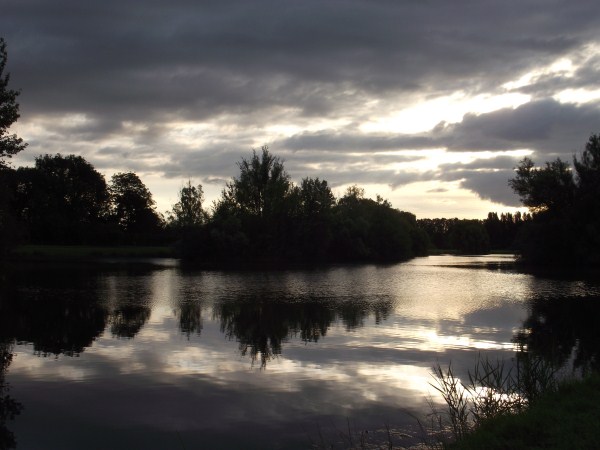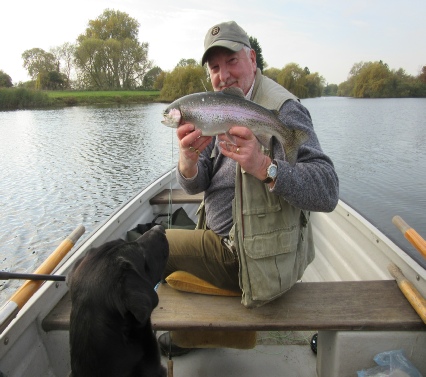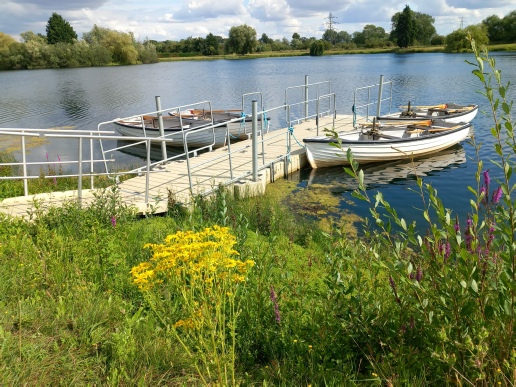

Fishing Stories and Tips
We welcome contributions from all members to this page

Fishing Tips by Lucius Pike
Probably the most important tip at Roxton Park is to relax and ensure you take the time to absorb the peaceful beauty of the lake and its surroundings. Whether in Spring Summer or Autumn it is a truly beautiful place, that if you let it, will banish the cares of everyday life in an instant.
With depths in the lake between 6 and 16 feet (a map of the lake giving depths is provided in the lodge) a floating line will suffice in nearly all circumstances, varying the leader length between 9’ and 12’, up to 15’ if needed to get down to the depth of the feeding fish. Generally though a leader of 9’ or 10’ foot will suffice, with the trout more often than not feeding in the upper layers of the water. An intermediate line can of course prove a useful alternative, particularly early season or in windy conditions. A 9’ or 9’ 6” rod taking a 6 or 7 weight line is ideal if fishing from the bank, with much lighter gear being perfectly adequate from the boats.
When the 1st April brings us back to the water full of anticipation for the season ahead dark nymphs/small lures are a good choice, with the Montana being particularly productive. Even in the often cool early season weather there are good hatches of buzzers, in particular black and the large grey variety commonly known as “Grey boys”. During a rise, buzzer patterns will be successful when fished static or very slowly in the surface film, and at other times down deeper with a long leader and a figure of eight or other smooth retrieve, fished right up to the boat. Black Gnats, Adams, Rat Faced McDougals and Yellow Humpies often succeed on the surface.
As the water warms and the first Damsels hatch, Pheasant Tail, Gold Ribbed Hares Ear and Damsel nymph patterns will all take good fish, varying the depth and speed of retrieve according to conditions. Gold head patterns are particularly successful when the fish are feeding in the deeper water. Mayfly nymphs are also worth trying as May progresses, with the Grey and Royal Wulff often the best dry option in late May/early June when there are good Mayfly hatches. Small black sedges also hatch freely at this time of year with the artificials being successful when fished in or just below the surface film. Alders are also present and can be deadly on their day.
As we move into summer, the Damsel hatches reach their peak and most of the larger nymph patterns will take fish with a Demoiselle proving better than most. Dry damsels also take a good number of fish. During the day Daddy Longlegs start to be blown onto the water and fished dry provide very exciting sport. Goldhead Daddy’s fished sub surface also account for a lot of fish at this time of year. There are excellent sedge hatches, particularly in the evening, including the large Red Sedges which are true giants of their kind. G & H Sedge and Silver Sedge on the surface make for exiting sport either static or twitched along. Silver Invicta is a good sub surface sedge imitator.
Daddy’s and Sedges continue to be successful right through to the end of the season, with buzzers again coming into their own. Although there are still good buzzer hatches when fish can be caught on or near the surface, it pays to try all depths at this time of year, including fishing very slowly close to the bottom. There are also a lot of “Fry Bashers” around in the autumn and fry imitators such as Polystickle or Appetizer will generate some fierce takes. Nymph patterns fished slowly will continue to catch fish as the water cools.
Looking forward to seeing you on the bank when happy dace are here again!
Tight Lines,
Lucius Pike


| Site Map |
| Photo Gallery |
| Wildlife |
| Lodge and Car Park |
| Fishing Stories and Tips |
| Fishing Update |
| Rules |
| New Members |